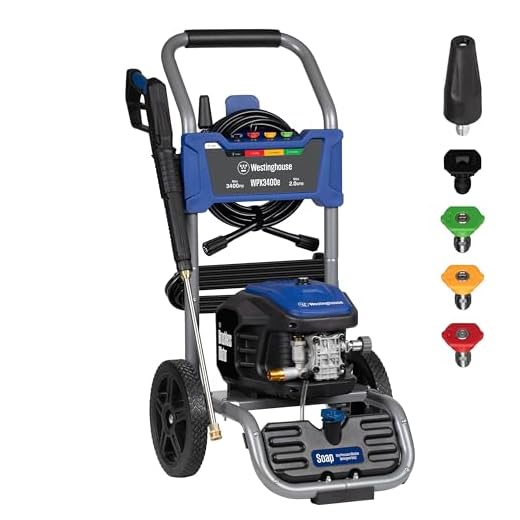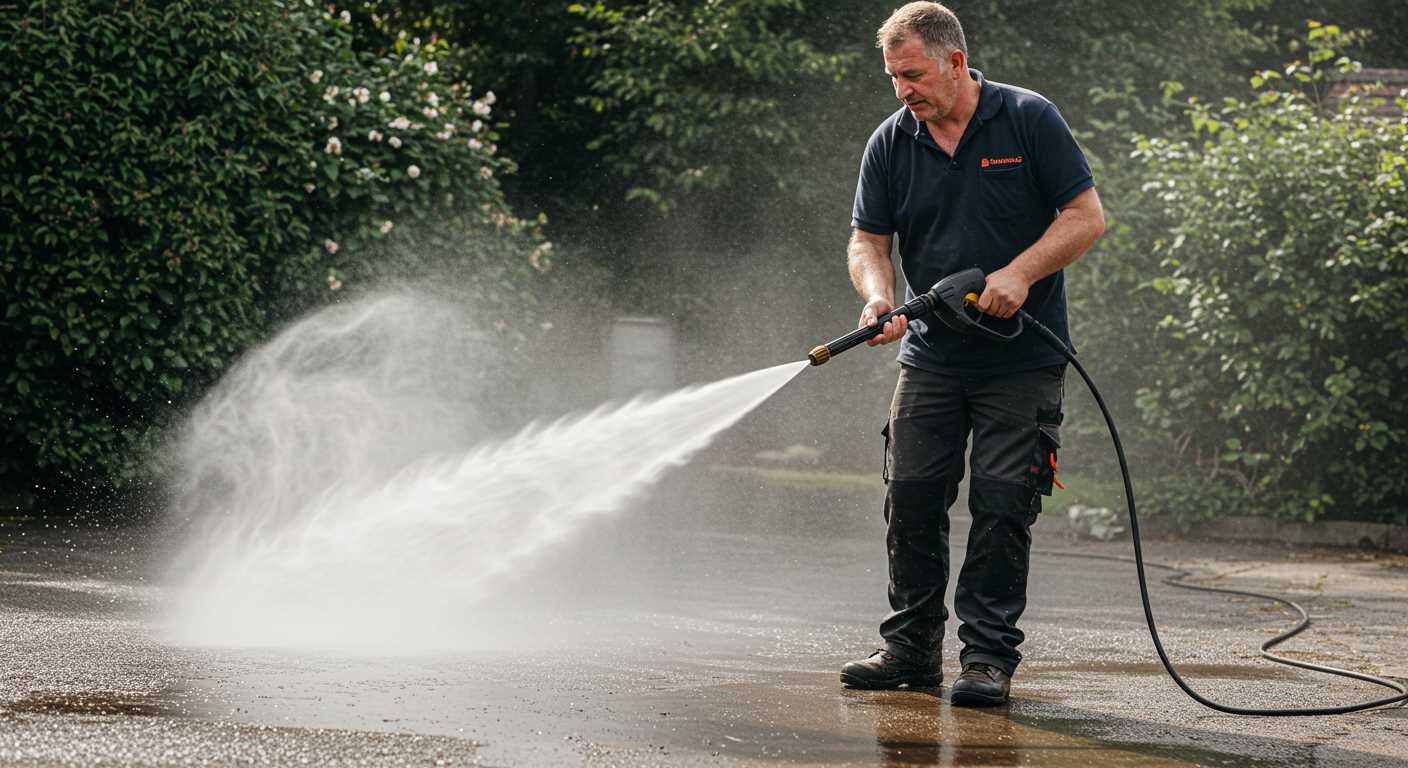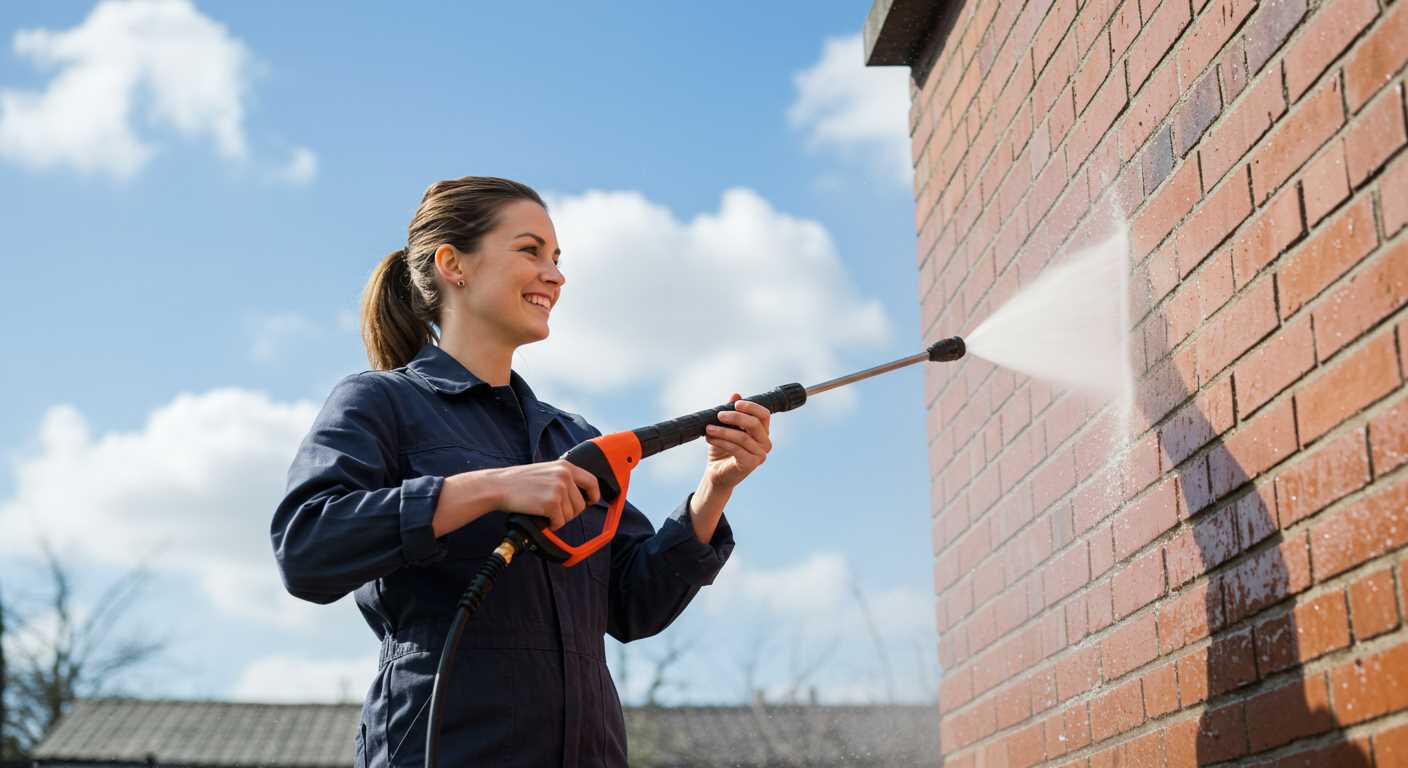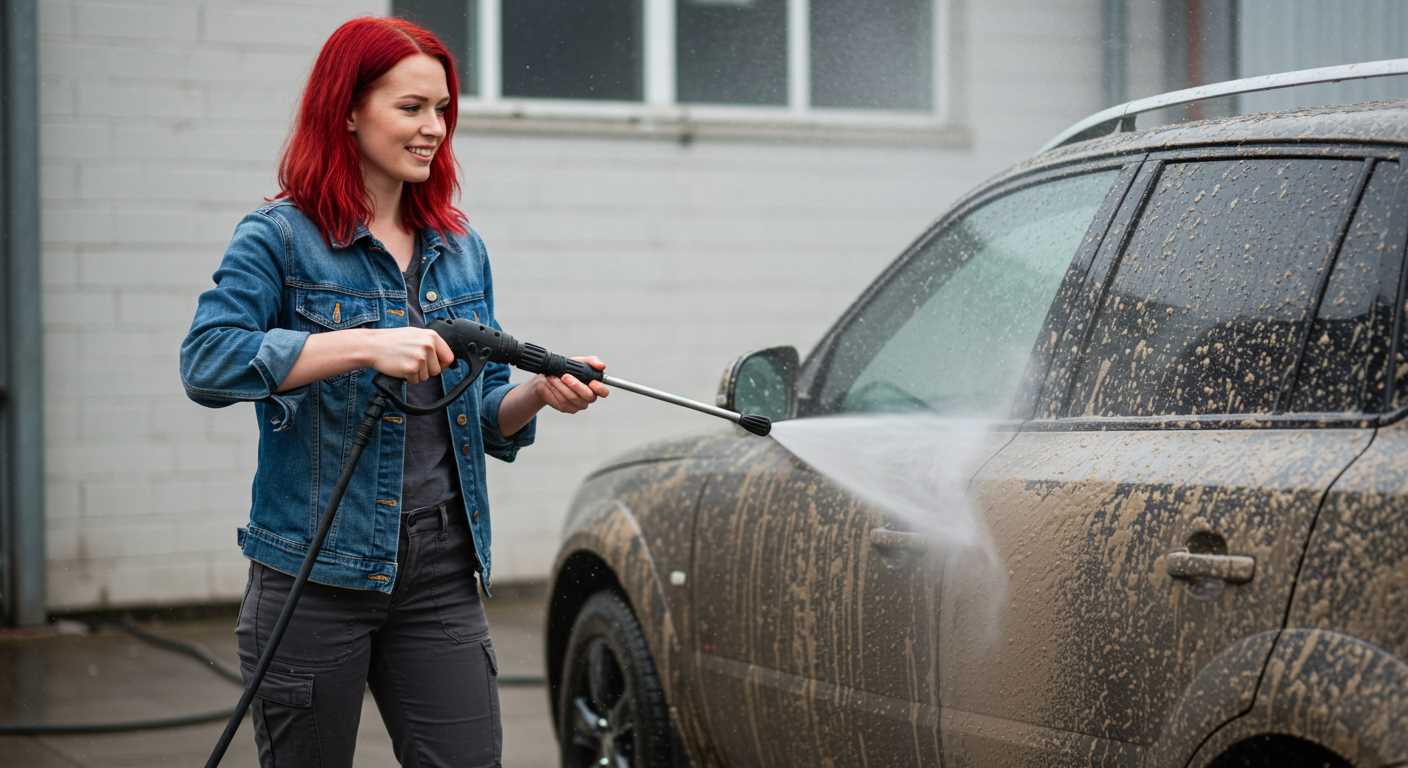



If you’re considering purchasing a high-performance cleaning machine for your industrial operations, anticipate an electrical consumption ranging between 5 kW to 25 kW, depending on the model and specifications. It’s essential to evaluate the cleaning tasks to select an appropriate unit that aligns with your productivity goals.
Be aware that efficiency varies across brands and configurations. Units designed for greater cleaning pressures often draw more energy, with higher flow rates contributing to increased consumption. Factor in both the voltage and amperage ratings; machines with a higher voltage generally operate at lower amperage, thus resulting in lesser total current draw.
To optimise your investment, examine energy-efficient options equipped with advanced technology that enhances output while minimising electricity usage. On average, expect an operational cost to range between £0.25 to £1.00 per hour, significantly influenced by the chosen power settings and the duration of use.
Understanding Power Ratings of Pressure Washers

Choosing the right cleaning machine begins with evaluating its energy specifications. These ratings typically indicate the maximum output and efficiency, influencing performance significantly.
Common metrics include:
- Watts: Reflects the electrical output; higher wattage correlates with increased cleaning capabilities. For example, units exceeding 2000 watts are often best for heavy-duty tasks.
- Bar: Measures pressure; values above 150 bar typically suffice for most industrial applications. For stubborn stains, selecting a model with 200 bar or more ensures effective cleaning.
- Litres per minute (LPM): Indicates water flow rate; models offering 10 LPM and above generally handle larger areas quickly.
It’s advisable to assess both pressure and flow rate in tandem. A machine with high pressure but low flow may not achieve thorough cleaning, while an optimal balance enhances efficiency.
For sustained usage, consider energy consumption over time. Selecting models with energy-saving features can yield cost savings over the lifespan of the equipment, especially in heavy applications.
The type of motor also plays a role in determining the longevity and reliability of the device:
- Induction motors: Often last longer, are quieter, and more efficient compared to universal motors.
- Universal motors: Lightweight and powerful but may not perform as reliably under continuous use.
Incorporating variable pressure settings can offer versatility for varied tasks, allowing users to adjust output based on the requirement, which is especially beneficial in specific cleaning scenarios.
In summary, evaluating specifications is paramount to ensure the selected machine meets the demands of your specific applications efficiently while optimising energy consumption. Aim for a combination that balances wattage, bar, and flow rate tailored to your operational needs.
Comparing Electric vs. Gas-Powered Cleaners
For optimal cleaning performance, select between electric or gas models based on your requirements. Electric types are suited for light to moderate tasks, while gas versions excel in heavy-duty applications.
Performance and Efficiency
Electric units generate around 1,500 to 2,500 PSI with a flow rate of 1.2 to 2.5 GPM, making them ideal for household tasks like washing cars or patios. Gas units typically produce between 3,000 and 4,000 PSI and a flow rate of 2.5 to 4.0 GPM, allowing for effective removal of stubborn grime on driveways and industrial facilities.
Cost and Maintenance
Initial expenses for electric devices are lower, typically ranging from £100 to £400. Gas types can cost between £300 and £1,500. While electric options require minimal upkeep, gas variants necessitate oil changes, filter replacements, and periodic servicing, increasing long-term investment.
| Feature | Electric Cleaners | Gas Cleaners |
|---|---|---|
| Pressure (PSI) | 1,500 – 2,500 | 3,000 – 4,000 |
| Flow Rate (GPM) | 1.2 – 2.5 | 2.5 – 4.0 |
| Cost Range | £100 – £400 | £300 – £1,500 |
| Maintenance | Minimal | Regular servicing required |
Evaluate tasks ahead to inform your choice. Electric units offer convenience for quick jobs, while gas brings the power for more challenging projects. Make a decision based on frequency and intensity of use to maximise your investment.
Calculating Energy Consumption During Operation
To determine energy consumption in real-time, multiply the unit’s wattage by the hours of operation. For instance, if a device operates at 3000 watts for 2 hours, the calculation would be 3000 * 2 = 6000 watt-hours or 6 kilowatt-hours (kWh).
Identifying specific usage patterns is beneficial. If you employ a unit intermittently, divide operational time into distinct sessions. This way, the total energy utilised can be more precisely calculated. Furthermore, many units list operational wattage differently for start-up and running, so always factor in the higher start-up figure.
Be aware of the efficiency ratings of the equipment. Not all devices consume energy equally. Machines with higher efficiency ratings will use less electricity for the same level of cleaning effectiveness. For example, a model rated for 90% efficiency will require less energy compared to one with a 70% rating for completing the same task.
Consider additional costs linked to electricity rates in your area. Depending on the utility provider, these rates can vary significantly. Be sure to apply the local rate to your total consumption for accurate cost estimation.
Lastly, keep track of your operational habits. Regularly logging the frequency and duration of use can highlight trends, enabling future adjustments that enhance both performance and cost effectiveness.
Factors Influencing Energy Consumption in Industrial Models

The container’s design plays a pivotal role in energy efficiency. Models featuring a robust exterior are less prone to heat loss, thereby utilising energy more effectively. Investing in insulated units can lead to significant savings in fuel consumption during prolonged use.
The choice of motor type is fundamental; brushless motors typically draw less current compared to traditional brushed variants. These advanced motors often boast a longer lifespan and enhanced performance, which translates directly into lower energy consumption while maintaining optimal cleaning output.
Pressure settings also impact energy demands. Operating at higher pressures necessitates more energy, so selecting a model with adjustable pressure capabilities can allow for tailored usage that minimises unnecessary consumption during lighter tasks.
Maintenance routines cannot be overlooked. Regular inspections and servicing ensure that crucial components, such as pumps and nozzles, are functioning at peak efficiency. Any blockages or wear can cause the system to work harder, leading to increased energy usage.
The length and diameter of hoses influence flow rates and can also affect energy usage. Shorter, wider hoses reduce friction loss, allowing the unit to operate more efficiently by reducing the amount of energy required to maintain the desired pressure and flow rate.
Environmental conditions should be considered as well. Operating in cold temperatures can result in increased energy consumption due to the need for additional heating elements or adjustments in pressure settings. Therefore, it’s prudent to monitor working conditions and adapt operations accordingly.
Assessing the Impact of Nozzle Size on Power Requirements

Choosing the appropriate nozzle size is pivotal in determining the energy demands of cleaning equipment. A smaller nozzle, for instance, creates a more concentrated jet, which can increase resistance and, consequently, raise the energy needed to maintain optimal performance.
- Small Nozzles (0° to 15°): These nozzles generate a high-pressure stream but can lead to increased strain on the machine. Expect higher energy usage, especially during prolonged tasks or when tackling stubborn stains.
- Medium Nozzles (25°): More versatile, these typically reduce the load on the device. They allow for effective cleaning while balancing performance and consumption. This size often proves to be the most efficient for general use.
- Large Nozzles (40° and above): Utilising wider spray patterns can decrease pressure but may also lower energy consumption significantly. Ideal for rinsing and less intensive tasks, larger nozzles are energy-efficient alternatives for lighter jobs.
It’s important to pair the nozzle with the intended application. A mismatch can lead to excessive energy draw or inadequate cleaning results, which could necessitate longer runtimes and more intense usage.
While experimenting with nozzle sizes, take note of the manufacturer’s input specifications. Observing the correlation between nozzle choice and energy consumption can guide future selections. Conducting an analysis on performance at various nozzle sizes reveals patterns in efficiency that can enhance operational strategies.
In practice, I recommend keeping a variety of nozzles on hand. This flexibility allows for quick adjustments based on the nature of the task, ensuring both peak performance and minimised energy waste.
Estimating Operational Costs of Using Pressure Washers
To efficiently estimate the operating expenses associated with cleaning equipment, start by determining the electricity or fuel costs incurred during its use. Calculating the kilowatt-hours consumed by electric models is straightforward; for gas units, factor in the price of fuel and the consumption rate, typically measured in gallons per hour.
Direct and Indirect Costs
Direct costs encompass energy expenditures, while indirect costs might include maintenance and repair needs, which can vary significantly depending on the machine type. Regular upkeep is essential for extending the lifespan and ensuring optimal performance of the equipment. I recommend tracking these expenses over time to identify trends that may affect the overall budget.
Maintenance Impact on Budget

Maintenance costs often fluctuate based on usage frequency and environment. Regular checks and servicing can prevent costly breakdowns, potentially saving funds in the long run. By establishing a maintenance schedule and adhering to it, the risk of unexpected costs diminishes. Keep detailed records of service dates and expenses to support future forecasting and budget planning.
Evaluating the Environmental Considerations of Energy Consumption

To minimize the ecological impact of cleaning equipment, it’s essential to account for the energy consumption patterns associated with their operation. Selecting models with lower energy profiles can significantly reduce greenhouse gas emissions. Whenever possible, opt for machines that are designed for energy efficiency, as they often employ advanced technologies to accomplish tasks with less resource consumption.
Choosing Sustainable Options
Electric variants are generally cleaner than their fuel-driven counterparts. When addressing environmental concerns, investing in electric models benefits air quality and reduces noise pollution, thus contributing to a more sustainable work environment. Ensure that the electricity source is renewable; if you can power your equipment through solar or wind energy, the carbon footprint diminishes drastically.
Minimizing Resource Waste

Incorporate practices that limit water usage without sacrificing effectiveness. Selecting appropriate nozzle sizes and spray techniques enhances performance while reducing water wastage. Maintaining equipment to prevent breakdowns or inefficiencies also conserves both energy and resources. Training staff to use these machines responsibly ensures that they operate within their optimal parameters, enhancing both performance and sustainability.








